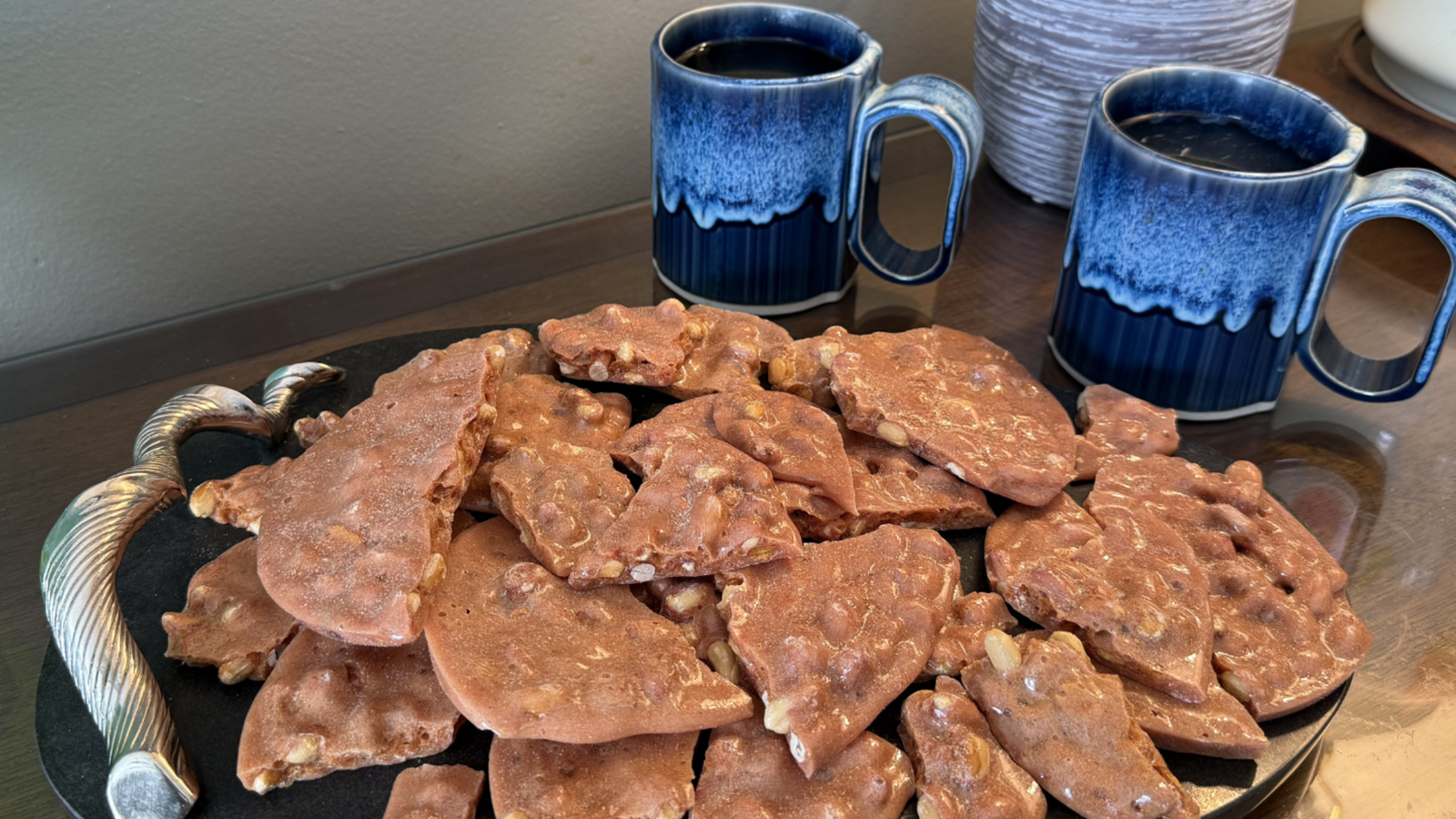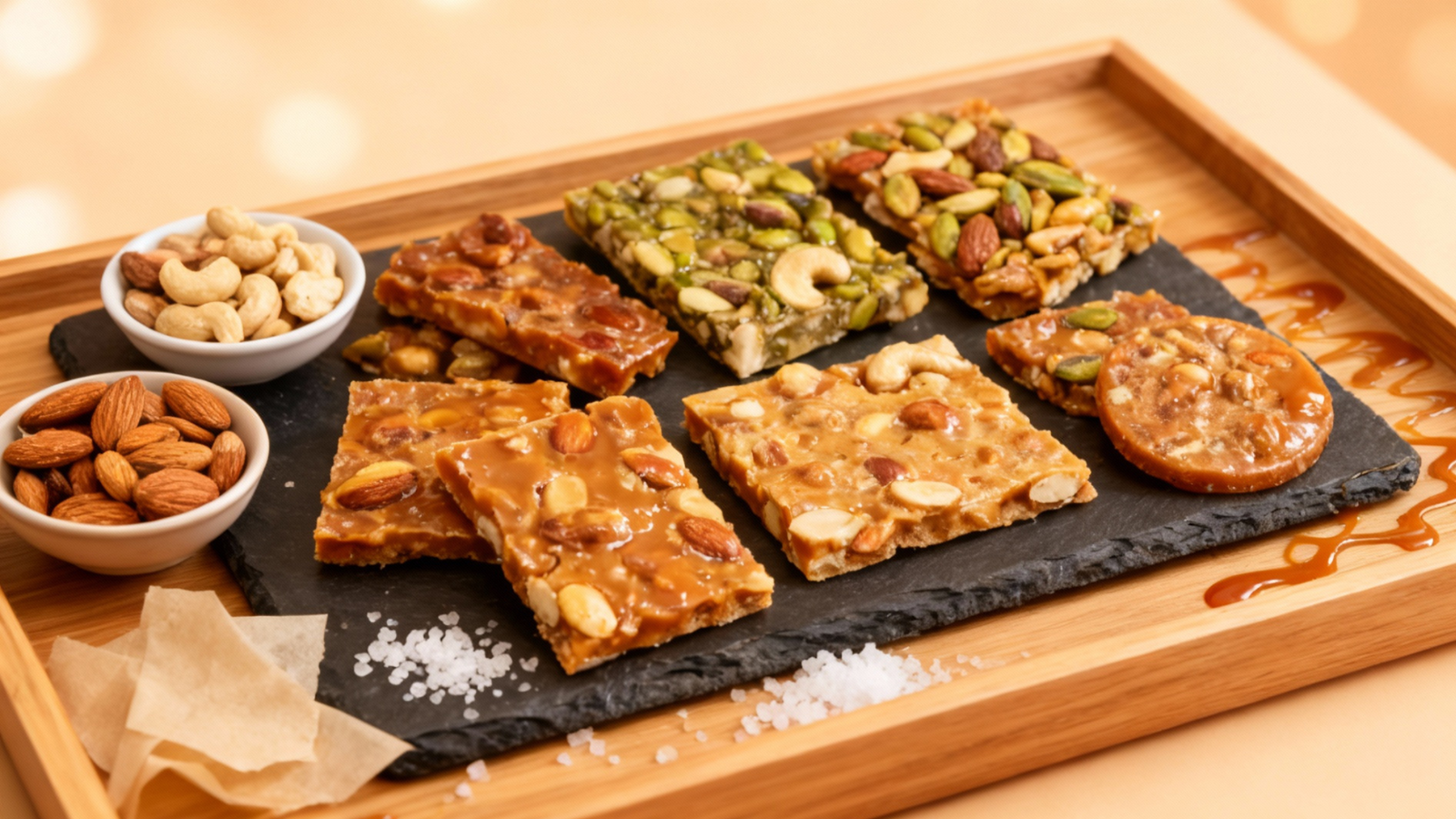Instant Gifting Made Easy — Gift Cards Available | Free Shipping $100+
Instant Gifting Made Easy — Gift Cards Available | Free Shipping $100+
Where Was Peanut Brittle Invented? Exploring the Crunchy Origin Story

When you crack into a piece of peanut brittle, something primal stirs inside: the satisfying snap, the sweet kiss of caramelized sugar, the earthy crunch of toasted peanuts. But beyond the taste, many wonder: where was peanut brittle invented? This candy isn’t just a holiday staple; it’s woven into the tapestry of American candy history, a crunchy relic with stories as varied as the regions that claim it.
In folklore and family cookbooks alike, legends swirl about soldiers in the Civil War or Southern plantations. Here, we’ll slice through sugary myths and map the true origin of peanut brittle. From 19th-century New England kitchens experimenting with maple sugar brittle to molasses-based recipes on Georgia plantations, you’ll emerge with a clear history of peanut brittle, ready to appreciate every crack and crunch.
Along the way, we’ll debunk enduring tales and celebrate the candy-making traditions that turned simple ingredients into lasting Southern dessert legends.
Debunking Myths About Where Peanut Brittle Was Invented
Myth: Invented by Civil War Soldiers
A long-held tale credits Union and Confederate troops with combining sugar and peanuts for an off-duty snack. However, 19th-century military diaries and field rations do not mention brittle-making.
Soldiers prized hardtack and jerky, not glossy sugar confections. This myth likely originated from post-war oral traditions that celebrated resourceful camp cooks. Yet printed recipes didn’t surface until decades later in civilian kitchens.
Myth: Always Made with Sugar Cane
Many assume peanut brittle sprang from sugar cane plantations, given America’s sweet tooth and molasses-based recipe traditions. In reality, early New England cooks crafted versions using maple sugar brittle, tapping sap from local trees.
Colonial manuscripts from Massachusetts kitchens list grated maple sugar and peanuts well before widespread cane-sugar imports. Sugar-cane legends overshadow this origin of peanut brittle, but primary sources tell a different story.
What Recipe Records Actually Show
Instead of battlefield improvisations or tropical mills, the earliest printed history of peanut brittle resides in mid-1800s New England cookbooks. A 1858 manual includes a recipe for brittle using white sugar boiled to amber, combined with peanuts.
By 1885, Southern guides offered recipes based on molasses that reflected the plantation economy. These dated entries mark the accurate timeline, what food historians refer to as the history of peanut brittle.
Tracing the Early Origins of Peanut Brittle: Was It New England or the South?
Maple-Sugar Brittle in 1800s Massachusetts
One of the earliest known recipes appears in an 1805 Massachusetts collection: a maple sugar brittle that mixed freshly boiled maple syrup with roasted peanuts. New England households embraced this variant, celebrating the autumn sugaring-off season with a sweet, nutty treat.
Prominent cooks like Amelia Simmons documented this version, emphasizing local ingredients over imported cane sugar. Such entries challenge the notion that peanut brittle emerged solely from the South.
Molasses-Based Versions on Georgia Plantations
Meanwhile, Southern plantations in Georgia relied on molasses-based recipes for numerous sweets, including early versions of peanut brittle. Wealthy plantation owners served brittle as an after-dinner confection, highlighting local cane sugar and dark treacle.
Oral traditions recount how enslaved cooks perfected the texture and balance of sweet and salty flavors, contributing to what would become a hallmark of Southern desserts. These concurrent developments illustrate a true crossroads of regional ingenuity.
Regional Food Legends: From Tennessee Fairs to Louisiana Kitchens
Tennessee County Fair Competitions
In East Tennessee, annual county fairs crown breeders of prize livestock and champions of peanut brittle. Competitors vie for golden ribbons by tweaking sugar-cooking temperatures and peanut roasting levels. Local legend credits a 1923 cook named Clara Mayfield with a secret chili-infused brittle that won first place six consecutive years, attracting food lovers statewide.
Louisiana Creole Family Traditions
In rural Louisiana, Creole households include peanut brittle in their holiday spreads alongside pralines and beignets. Recipes passed down through generations often call for dark muscovado or cane sugar and frequently incorporate spices like nutmeg and cayenne. These family recipe cards, some dating to the 1930s, attest to a vibrant candy-making tradition rooted in multicultural kitchens.
Harvest Festival Celebrations
Across Midwest harvest festivals, vendors sell peanut brittle in bulk, often drizzling chocolate or sprinkling sea salt on top. These community gatherings blend agrarian pride with sweet indulgence, evoking the spirit of early frontier markets. The candy’s portability and shelf life made it a staple for autumn travelers seeking portable snacks.
While early cooks reached for maple or molasses, Brittle-Brittle updates tradition with golden, floral honey—offering a flavor profile that nods to the past but tastes refreshingly modern.
How Did Peanut Brittle Become Popular? Modern Twists and Trends
Gourmet and Spicy Variations
In upscale candy boutiques, chocolate-dipped peanut brittle meets artisanal salt flakes and exotic peppers. Chefs experiment with smoked paprika, wasabi powder, and even sriracha drizzle. These modern riffs capture foodie imaginations, proving that a rustic sweet can evolve into a sophisticated snack—one that pushes the boundaries of a candy once confined to kitchen table staples.
Commercial Brands Shaping National Taste
By the mid-20th century, brands like Goetze’s and Werther’s launched mass-produced peanut brittle bars, complete with retro packaging. Their marketing campaigns elevated brittle from a regional curiosity to a nationwide favorite, stocking corner stores from Maine to California. Sales spikes during holidays cemented its status in the pantheon of classic American confections.
Unlike commercial brittles loaded with preservatives, Brittle-Brittle honors both Northern and Southern traditions by using simple, honest ingredients—Texas and Georgia peanuts, real honey, and a touch of vanilla, never butter.
A Final Crunch: Embracing Peanut Brittle’s Rich Tapestry
Whether your roots trace to Massachusetts maple-sugar kitchens or Georgia molasses cauldrons, peanut brittle’s journey spans centuries and regions. Understanding where it was invented enriches every bite, reminding us that behind every crack lies a story of innovation, tradition, and sweet American ingenuity.
Brittle-Brittle’s brittle isn’t just candy—it’s a Southern legacy, sweetened with honey and stirred with stories.
From sugaring-off season in Massachusetts to molasses pots in Georgia, brittle has always told a story. At Brittle-Brittle, we’re proud to continue that tale—one crackly, honey-kissed bite at a time.




